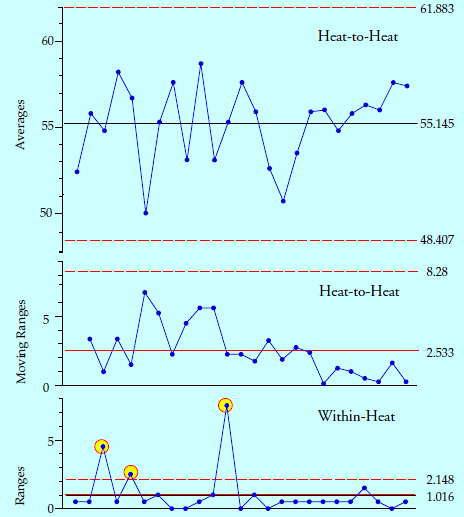The average and range chart handles most situations where the data can be logically organized into homogeneous subgroups. However, this chart breaks down when faced with a hierarchical data structure containing two or more levels of routine variation. For these situations I developed the three-way chart in 1982.
|
ADVERTISEMENT |
Rational subgrouping
To understand the three-way chart we need to begin with a review of the principles of rational subgrouping. All process behavior charts depend upon rational subgrouping and rational sampling. The reason for this goes back to one of the principles of understanding data: No data have meaning apart from their context. You cannot create meaning by using any mathematical computation. Computations can only distill out the meaning invested in your data by their context. Rational sampling and rational subgrouping are the keys to this distillation. If your computations do not respect the structure created within your data by their context, then your results will be meaningless.
…

Add new comment